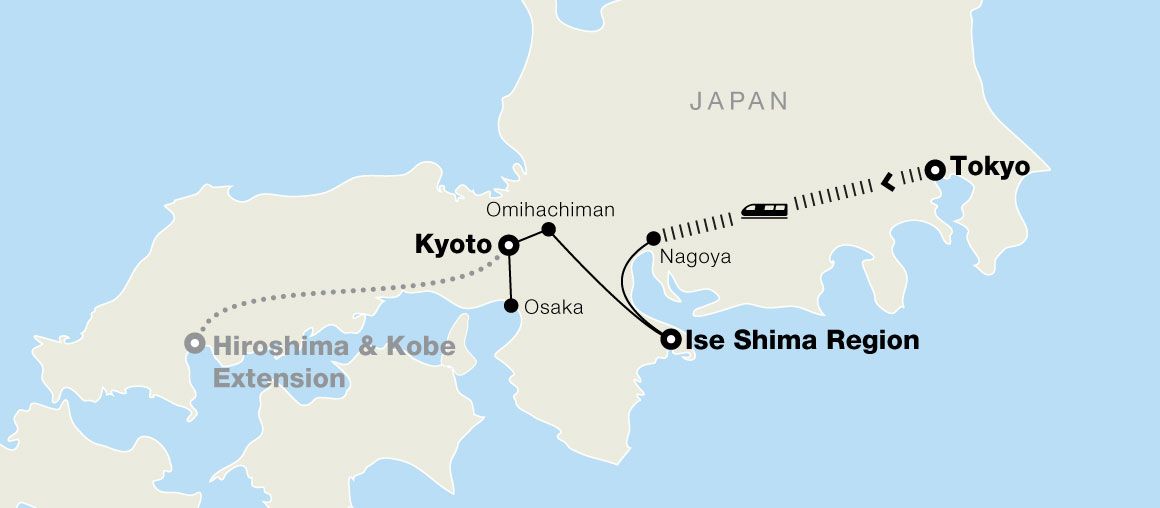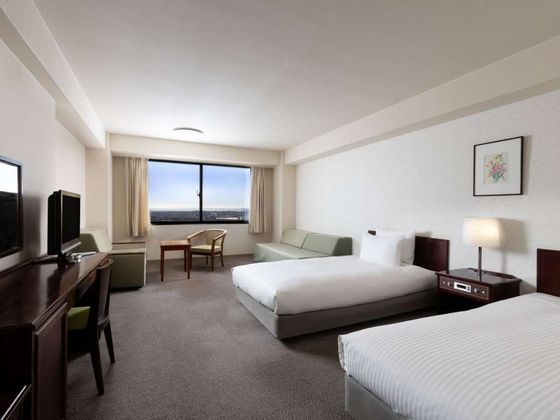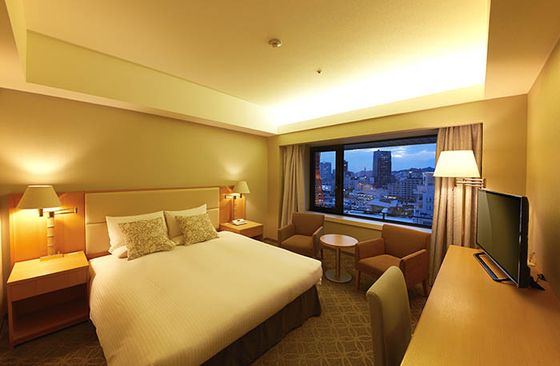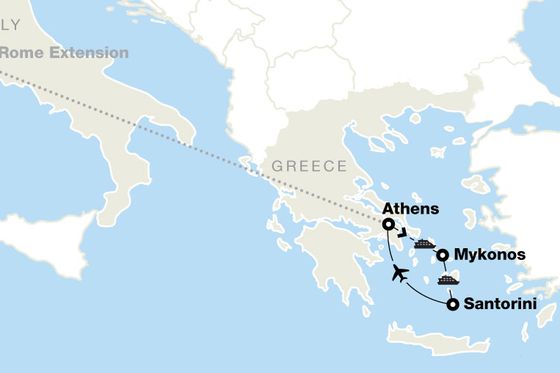Japan for Women: Tokyo, Ise-Shima Peninsula & Kyoto
11 days | 14 days with Hiroshima & Kobe extension |
- Group size
- 15–28 travelers
- Activity level
New tours. Exclusive prices. Going soon.
We love a deal—but these introductory offers won’t stick around forever. Book today to lock in your lowest price and start dreaming of those only-on-tour moments, like watching Maori dancers perform the haka or letting a bite of Belgian chocolate melt in your mouth.
Experience Japan’s shrines, street style, and sisterhood on a women-led tour.
With women by your side and a female Tour Director leading the way, this journey through Japan is designed to be as empowering as it is unforgettable. From Tokyo’s boundary-pushing fashion scene to the quiet reverence of Kyoto’s shrines, every stop invites you to explore, connect, and discover. You’ll share lunch with the women of the legendary ama pearl divers, learn the precise art of ramen and tea, and reflect at Hiroshima’s Peace Memorial (if you add the tour’s extension). Whether you’re wandering through Shibuya or watching a Maiko performance in Kyoto, this trip is about meaningful moments, shared stories, and seeing Japan through a lens that celebrates women’s curiosity and cultural contributions.
Your tour package includes
- 9 nights in handpicked hotels
- 9 breakfasts
- 1 lunch
- 3 dinners with beer or wine
- 2 tastings
- 9 sightseeing tours
- Expert Tour Director & local guides
- Private deluxe motor coach
- 1 train ride
Included highlights
- Tokyo’s dynamic Shibuya and Harajuku areas
- Yayoi Kusama Museum
- Japanese tea ceremony
- Indigo Dyeing Workshop
- Ise Jingu Naiku inner sanctuary
- Ama pearl divers meeting
- Historic town of Omihachiman
- Guided meditation session
- Kodaiji Temple visit
- Fushimi Inari shrine
- Farewell dinner & Maiko performance
Itinerary

Overnight Flight1 night
Day 1: Travel day
Board your overnight flight to Tokyo today.
Tokyo3 nights
Day 2: Arrival in Tokyo
Welcome to Japan! Transfer to your hotel and settle in. Then, meet your Tour Director and female groupmates at a welcome mixer before calling it a night.
Reviews
Hotels
We handpick every hotel to strike the balance of comfort, location, and local charm. Specific accommodations will vary based on your departure date, but these are frequently used hotels for this tour and we're confident you'll be satisfied.

Tokyo - Hotel Groove Shinjuku
This eclectic hotel is located in the Shinjuku neighborhood of Tokyo. Guests enjoy city views, open-air terraces, and on-site restaurant with bar. Nearby you'll find the Samurai Museum, Choko-ji Temple, and the Seibu Shinjuku...

Ise Shima Region - Grand Mercure Ise-Shima Resort & Spa
This serene hotel is located in the coastal town of Shima, in Japan’s Ise-Shima region. Guests enjoy rejuvenating treatments at the on-site spa, panoramic views of Ago Bay from the terrace lounge, and refined Japanese dining...

Kyoto - La'gent Kyoto Nijo
This modern hotel is located in the heart of Kyoto. Guests enjoy the public bath and spa, on-site restaurant, and peaceful rooms. Nearby you'll find Nijo Castle, the Imperial Palace, and the Kyoto International Manga Museum.

Hiroshima - KIRO Hotel Hiroshima
This minimalist hotel is located in Hiroshima's city-center. Guests enjoy the simple modern rooms, on-site coffee house, and bar. Nearby you'll find the Hiroshima Peace Memorial Museum, the Hiroshima Prefectural Art Museum...

Kobe - Hotel Okura Kobe
This sophisticated hotel is located in Kobe. Guests enjoy elegant rooms with harbor views, a tranquil spa offering Japanese wellness treatments, and refined dining options featuring Kobe beef and seasonal delicacies. Nearby...
Flights
Round-trip flights are one more thing we handle to make your journey as smooth as possible. Our team of travel experts will find the best flight itinerary for you at a competitive rate, thanks to our partnerships with top airlines.
Add our airfare and you’ll get:
- Round-trip flight for your tour
- Airport transfers at your destination
- A great price locked in today
- 24/7 support from our dedicated service team
- Options for arriving early, staying longer, or requesting an upgrade
- Flexible rebooking options if your tour itinerary changes
FAQ
- In order to enter Japan, U.S. and Canadian citizens need a valid passport with an expiration date extending at least six months beyond the date of return.
- We recommend having at least two blank passport pages for entry stamps.
- There is no visa required for U.S. or Canadian citizens to enter Japan.
- It is recommended to register your passport, flight, and other travel information at least 72 hours prior to departure through Visit Japan Web to speed up the immigration and customs process upon arrival. Once you’ve completed your information, you will receive a QR code to present upon arrival.
- If you are not a U.S. or Canadian citizen, you must contact Japan’s consulate for your specific entry requirements.
- You can see the most up-to-date entry requirements for the destination(s) you’ll visit on tour by going to goaheadtours.com/entry-requirements and searching the code JP4.
- Round-trip flights booked through Go Ahead Tours arrive in Tokyo and depart from Osaka.
- Transfers to and from the airport at your destination are included for travelers who have purchased their flights through Go Ahead Tours. Travelers who booked their own flights are responsible for securing their own airport transfers.
- When you arrive in Tokyo, a Go Ahead representative will be waiting for you in the arrivals hall with a Go Ahead sign or a sign with your name(s). If you don’t see a representative immediately, please be patient and stay in the arrivals area. They may be assisting another traveler who has also just arrived and will be back shortly.
Physical Activity Level
This is a moderate physical activity-level tour. You can expect to be on the move on a regular basis throughout the course of the tour.
Tour Pacing
This is a steady-paced tour. The pace of a tour itinerary considers how often you’ll switch hotels, the amount of planned daily activities, and how you’ll get from place to place. You can expect:
- Most days full of included activities in a row (more if you add excursions)
- Most transportation by motor coach, some by train
- About four hours of bus time daily
Walking, Terrain & Physical Requirements
- Travelers should be prepared to walk two to three miles per day—this includes city streets, cobblestones, stairs, and hills.
- Stone walkways may be slippery even when dry.
- Access to the higher floors of Himeji Castle on the tour extension requires navigating a series of steep, narrow staircases.
- Travelers should be healthy enough to participate in all included walks without assistance.
- Please note: Adding optional excursions may increase the total amount of walking on your tour.
Climate Considerations
- Temperatures range from 40sF in winter to low-80sF in summer, with occasional heatwaves in the summer months (June-September).
- Summer is the rainy season in Japan and travelers should expect hot, humid days.
Physical Activity & Tour Pace Questions
- Go Ahead Tours and the Tour Director who accompanies your group are unable to provide special mobility or luggage handling assistance to travelers on tour. The responsibility of the Tour Director is to ensure the group enjoys a smooth and informative journey, and they can’t be relied on to provide individualized assistance to any one traveler.
- This tour moves at a reasonable pace to avoid missing scheduled stops. The rest of the group cannot miss any scheduled activities because of the needs of an individual.
- Due to the pace and physical activity level of this tour, mobility aids such as wheelchairs or walkers will be difficult to use and are not recommended. Please notify Go Ahead Tours before your departure if you plan to bring these on tour with you.
- If you have mobility concerns or tour pacing questions, please visit our Help Center or send a message to our Customer Experience Team.
- This tour includes various modes of transportation, including trains and private motor coach. Some modes of transportation will have raised platforms or steps and often not provide access to ramps or lifts.
- A high-speed train transfer from Tokyo to Nagoya is included in the price of your tour. (The tour extension also includes a high-speed train ride from Hiroshima to Kobe.)
- All other included transportation on this tour is by private motor coach.
- Japanese train stations typically operate similarly to airports: Security measures, such as baggage and body scanners, are common. Additionally, platforms are often spread across large distances and require travelers to carry their luggage up and down escalators or stairs. Porterage services aren’t offered and storage space is extremely limited. Please keep in mind that trains may only stop at each station for a few minutes; quick boarding and deboarding may be imperative.
- Please note that our travelers are limited to one checked bag and one carry-on bag per person due to storage limitations on motor coaches.
- Some airlines may impose additional charges if you exceed baggage size and weight restrictions. Be advised that you are responsible for any baggage fees incurred on all flights.
- Contact your airline(s) for baggage size and weight restrictions for your flights.
- Make sure you label your baggage and keep valuables, medication, and documents in your carry-on bag.
- Travelers must manage their own luggage throughout tour as porters are not guaranteed. This includes at hotels and airports.
- You will need a small overnight bag (such as your carry-on bag) for your last night in Tokyo. Your luggage will be transferred for you from Tokyo to your hotel in the Ise Shima region directly.
- We recommend packing lightweight, loose-fitting clothing that can be easily layered to accommodate varying temperatures, as well as a light jacket or rainwear.
- A sturdy pair of walking shoes or sneakers is recommended for sightseeing.
- You may want to pack dressier attire if you plan to visit a high-end restaurant or attend a special performance.
- It is preferable not to visit temples or other religious sites with bare legs and shoulders (and entrance may be denied on this basis).
- We recommend packing a reusable water bottle to cut down on single use plastic waste.
- We recommend packing a universal adapter, as well as a voltage converter if you plan on using your own hairdryer or other device without a built-in converter.
- In case of emergencies, we also recommend packing your medical insurance card in your carry-on.
- Go Ahead handpicks every hotel you’ll stay at, striking a balance between comfort, location, and local charm.
- Specific properties will vary based on your departure date, but are typically three-to-four-star hotels; always include private bathrooms; and usually have in-room safes for valuables. Additionally, your hotels will have Wi-Fi, but access may be limited to common areas. There may also not be elevators.
- Unfortunately, we can’t guarantee that your accommodations will have laundry services or facilities. We recommend checking directly with your hotels once they’ve been confirmed, about 30 days prior to departure.
- Some hotels on this tour are situated on narrow streets; as such, our buses can’t drop you off right out front. In these instances, you’ll have to walk your luggage to the property, no more than a few blocks.
- Please be advised that the strength of the air conditioning in Asian hotels/buildings is often not as strong or as cool as what you might be used to in the U.S. or Canada.
- Japan operates on 100 volts and uses a Type A plug, the same as in the U.S.
- Specific accommodations will vary based on your departure date.
- Guests will fully undress and leave their belongings in the locker room before entering the bathing area, as complete nudity is the traditional and expected practice at Japanese onsens. While some establishments are beginning to offer alternatives for modest visitors (such as designated swimsuit times or private bath rentals), these accommodations remain relatively uncommon.
- Before entering the shared baths, guests must thoroughly wash and rinse themselves at the washing stations. Be mindful of your surroundings to avoid spraying others while washing.
- A small white bathing towel is often provided or available for rent. This versatile towel serves as a modest cover-up when walking between areas, for washing your body, and for drying afterward. While bathing, most guests fold the towel and keep it nearby or place it folded on top of their heads. The bathing towel must never touch the bath water. Shampoo and soap are typically provided, though many guests prefer bringing their own.
- Hair should be worn up and secured to prevent it from touching either your towel or the water.
- Onsens are intended to be relaxing and tranquil environments. Speak quietly and be respectful of others. Swimming, diving, and running are prohibited. You may soak, exit, and reenter the baths at your leisure, though it's recommended not to spend more than 30 minutes in the hot water at one time.
- Dry off completely before returning to the locker room to change back into your clothes.
- Check an onsen's tattoo policy before visiting. While many establishments are becoming more accepting of tattoos—offering cover-up patches or private baths for tattooed guests—many still maintain traditional prohibitions. Although most Japanese people don't personally object to tattoos, many businesses maintain conservative policies regarding visible tattoos.
- Excursions are available for purchase prior to departure, and most excursions will be available for purchase while you are on tour directly through your mobile app for an additional $10 USD.
- We recommend purchasing excursions at least 3 days prior to your tour departure. Please note some excursions have advance booking deadlines. Check your tour itinerary for more information to ensure you don’t miss the deadline to add them.
- Optional excursions may be canceled on tour due to reasons like low enrollment, weather or unexpected closures. If an excursion you signed up for is canceled by Go Ahead Tours, you will be refunded the full cost of the excursion. Please note it may take up to 60 days for your refund to be processed.
- Your Tour Director may offer their own optional excursions which can only be purchased on tour via cash (in local currency).
- At least 60 days prior to departure, check with your doctor or healthcare provider for the latest updates and entry requirements, or visit the Centers for Disease Control and Prevention website at cdc.gov.
- If you have medication that you take daily, be sure you have enough for each day of the tour as well as any possible delays encountered.
- If you have dietary restrictions and/or food allergies please notify Go Ahead Tours at least 30 days prior to departure by logging in to your account and updating your traveler info. To update this information closer to your departure date, please call our Customer Experience Team.
- Most of our itineraries include headsets used during certain sightseeing tours so travelers can hear their guides or Tour Director. If you use an assisted listening device, such as a hearing aid or cochlear implant, please visit our Help Center for more information or contact our customer experience team. Please note that at this time not all our destinations offer headsets due to supplier limitations.
- The water is safe to drink throughout your tour unless posted otherwise.
- This tour includes two lunches and two dinners: They may be set menus, buffets, or family-style meals, depending on the location. Dinners also include one glass of beer, wine, or a soft drink, as well as water.
- Breakfast each morning is also included at the hotel and is typically buffet style with hot and cold options.
- Most Japanese meals are based around rice or noodles with fish, meat, and vegetables flavored with soy sauce and miso. You may recognize popular dishes like sushi, tempura, and hot pot.
- Travelers should expect meals to be delicately balanced in flavor—often lighter, less salty, and less sweet than Western dishes. Presentation is important, with food often served in small, beautifully arranged portions. Many dishes highlight seasonal ingredients and emphasize freshness and umami (a savory taste unique to Japanese cuisine). Raw fish (like sashimi and sushi) is common, and some textures—such as slimy (e.g., natto or grated yam) or chewy (e.g., mochi or squid)—may be unfamiliar. Meals are typically served with multiple small side dishes rather than one large main course, and it's customary to eat with chopsticks. Western-style substitutions may be limited outside major cities, so adventurous eaters will get the most out of the experience.
- Breakfast often includes rice, miso soup, grilled fish, and pickled vegetables. Lunch might be a bento box with rice, meat or fish, vegetables, and sometimes fruit. Dinner usually consists of rice, miso soup, a main dish (like fish or meat), and several side dishes (vegetables, pickles).
- For more traditional dishes, you'll want to try Sushi (vinegared rice with raw fish, vegetables, and seaweed), tempura (battered and deep-fried seafood or vegetables), sashimi (thinly sliced raw fish or seafood), ramen (noodle soup with meat, vegetables, and various toppings), and yakitori (skewered and grilled chicken).
- Be sure to try some Japanese specialties like the Kaiseki (a multi-course meal showcasing seasonal ingredients and culinary techniques), okonomiyaki (savory pancake with various ingredients like cabbage, meat, and seafood), takoyaki (ball-shaped snacks filled with octopus), natto (fermented soybeans often eaten with rice), and matcha (powdered green tea used in tea ceremonies and desserts).
- At the conclusion of your tour, it is customary to offer your Tour Director and driver a gratuity in local currency. Please keep current exchange rates in mind.
- We recommend tipping $10USD to $12USD per person per day for your Tour Director and $4USD per person per day for your driver.
- If applicable, we also recommend $2USD per local guide.
- Tips can only be paid in cash.
- If you are traveling to multiple countries with different currencies and the same Tour Director, ask them what currency they prefer for their tip.
- The cost of porterage is included in your tour price, and it is not necessary to tip baggage handlers.
- You will use the Japanese yen in Japan.
- Better rates of exchange are usually available overseas, although it’s worth ordering some currency from your local bank to use when you first arrive.
- We strongly advise that you take debit and credit cards, which can be used to withdraw cash at local banks as needed.
- You can use most cards at ATMs on the international networks Cirrus and Plus, but make sure to check with your home bank about withdrawal fees.
- International banks and businesses primarily accept debit and credit cards that work with the EMV chip system. If you don’t already have at least one card with a chip in it, we strongly recommend requesting one from your bank prior to your tour.
- Plan ahead and bring cash to tip your Tour Director, local guides, and bus drivers.
- To help you feel prepared before traveling on tour, we strongly recommend downloading the EF Go Ahead Tours mobile app. It’s free and provides information about important deadlines and entry requirements, as well as your detailed itinerary, packing tips, and more. You can also connect with fellow travelers through the app’s chat feature.
- Wi-Fi is available in most hotels, though some charges may apply.
- There is no Wi-Fi on any of the motor coaches.
- Please contact your mobile service provider for information on roaming charges.
- Your Tour Director will be leading your group throughout your journey. You will have the same Tour Director throughout your tour.
- The role of the Tour Director is not only to provide information and context on the destinations you visit, but also to confirm services, coordinate inclusions, prepare each days’ activities and support travelers while on tour. As such, they must focus on the success of the group, and cannot provide individualized assistance to any one traveler.
- One of the benefits of traveling with EF Go Ahead Tours is our on tour emergency support team.
- Our extensive network of offices around the world, and our integration of ISO 31000: Risk Management Guidelines, help our dedicated 24/7 Emergency Service teams anticipate and address on-tour challenges in a flexible and iterative way.
- This team supports travelers and Tour Directors using a combination of extensive training, simulations, incident response planning, and decades of experience to help manage emergencies if they arise, ranging from personal health concerns or injuries to major world events.
- As needed, On Tour Support can facilitate additional support for travelers on tour, arrange assistance from outside specialists, and liaise with local and international authorities to help solve on-the-ground issues. In addition, the team is dedicated to supporting and facilitating communication between travelers and families in the event of an emergency while on the road or at home.
- Japan is 13 hours ahead of Eastern Time (ET).
- When it’s noon in New York, it's 1am on the following day in Japan.
- When you travel with Go Ahead Tours, you’ll make a positive impact on the places you visit and the people and animals you meet along the way. That’s because our three core Responsible Travel commitments—protecting the environment, supporting local communities, and promoting animal welfare—are at the heart of every tour we offer.
- Travel, when done responsibly, can have an enormous socioeconomic impact on communities. To maximize your impact, eat at locally owned restaurants and shop at small businesses. Ask your Tour Director to point out restaurants they recommend.
- Prepare for your trip: Be aware of monetary norms such as tipping and negotiating in a market; learn about the destination’s forms of etiquette; and take some time to learn a few words in the local language.
- When interacting with locals, make sure to ask people for permission before you take their picture, and approach cultural differences with empathy and an open mind.
- Go Ahead Tours encourages travelers to limit their waste while on the road, especially single-use plastics. You can cut back on generating plastic waste by packing your own toiletries, using electronic documents, and bringing a reusable water bottle and shopping bag. If you need to use plastics or paper, please recycle.















































































